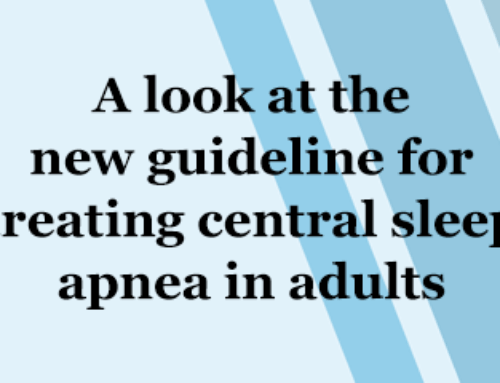In this interview, Cinthya Pena Orbea, MD, discusses the importance of providing bicultural care at her new clinic, which is designed to address the unique barriers Hispanic patients face in seeking treatment for sleep disorders. She shares her insights on promoting health equity by overcoming language and cultural challenges that contribute to poor health outcomes.
What inspired you to open a sleep disorders clinic to support the needs of Hispanic patients? How did your personal experiences shape this decision?
I have always been passionate about serving the community and advocating for underserved populations, particularly racial and ethnic minorities and those from low socioeconomic backgrounds. As a Hispanic individual, I have had a deep commitment to serving my community since I left my home country, Ecuador. This commitment became stronger when in my clinical practice I faced numerous challenges in providing equitable sleep care, especially to Hispanic patients, largely due to the lack of standardized bilingual resources and services available. Several Hispanic patients expressed their frustrations about relying on Google Translate to understand medical questionnaires and instructions, while also sharing their gratitude for having a Hispanic sleep provider. As such I was inspired to establish a Hispanic Sleep Clinic at Cleveland Clinic, where I could take action on the feedback received from patients and collaborate more closely with them to understand their unique sleep health needs with my research.
How do you address the unique challenges that minority communities, particularly Hispanic patients, face in accessing sleep care?
I address this by talking to them and being their advocate in the health care system. Last year, I began talking to Hispanic patients during their visits beyond their primary reason for their appointment. I learned some of their needs. Listening to them helped me shape the basis of what is now the Hispanic Sleep Clinic at Cleveland Clinic, a clinic that provides bilingual and bicultural sleep services from start to finish and in every aspect of their care.
What are some of the most surprising or frustrating barriers you’ve faced in making sleep care more accessible to the Hispanic community?
Our field relies on different supplier companies to provide treatment for sleep disorders. Initially, I was hoping to get guidance and support from companies located in states where the Hispanic population is large. However, I discovered that in the vast majority of these companies, including those located in states such as Texas and Florida, sleep services in Spanish are lacking. Phone lines, operators, websites, educational materials and service contracts are mostly in English.
When you encountered the lack of Spanish-language services in the sleep care industry, especially from major providers, how did that revelation drive your efforts to bring about change?
Recognizing the lack of Spanish-language services in the sleep care industry was a pivotal moment for me. I started to look for champions who wanted to join the effort within various disciplines and increase awareness of what we need to improve as a field.
You’re advocating for the creation of Spanish-language contracts and more educational materials. How are you approaching this task, and what advice would you give to others looking to make similar improvements in their practices?
I recommend starting with your daily clinic interactions. When you see a Hispanic patient who has Spanish as their preferred language, ask yourself whether you can provide the same quality of care as you do for other patients. Do you have the same resources and support system? Is your patient able to access the care in their preferred language from start to finish? If you identify gaps, develop a plan to address them and present it to your leadership and other stakeholders. All health care systems are committed to improving the quality of care and providing patient-centered services so your institution will likely support your effort.
What has been the response from the community since you opened the clinic? Can you share a moment that made you feel you’re truly making a difference?
The response from the community has been overwhelmingly positive, not just from patients but also from local Hispanic community organizations with which I’ve partnered. Every day since opening has been meaningful, but one moment stands out: when my very first patient expressed her immense gratitude, after telling me it was the first time she could fully communicate her needs and understand everything being discussed, including the materials in her educational folder. She even wished she could experience this level of support in other specialties.
For others looking to break down barriers in health care, particularly for underserved communities, what key lessons from your journey would you pass on?
Take the time to talk to your patients and learn from them. It is important to be brave and persistent. There will be moments when it feels like you’re alone and it is impossible to change a whole system that has been functioning in a certain way for decades. You’ll raise awareness and find supporters along the way. Always remember that change is possible, and your efforts are invaluable — you’ll see this reflected on your patients’ faces.





